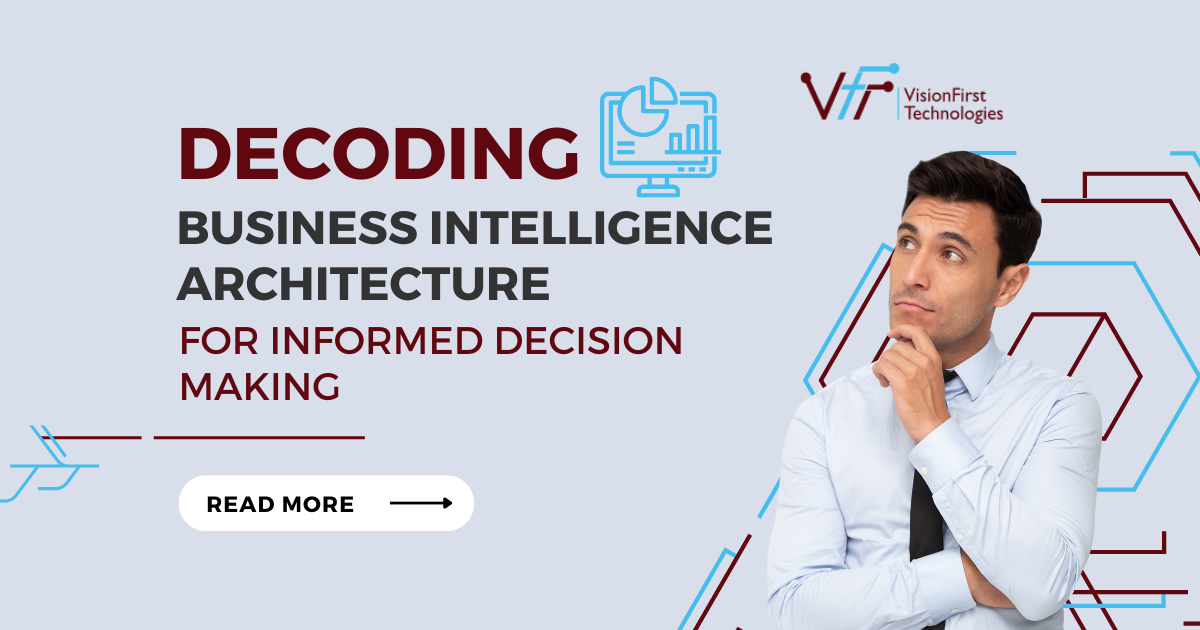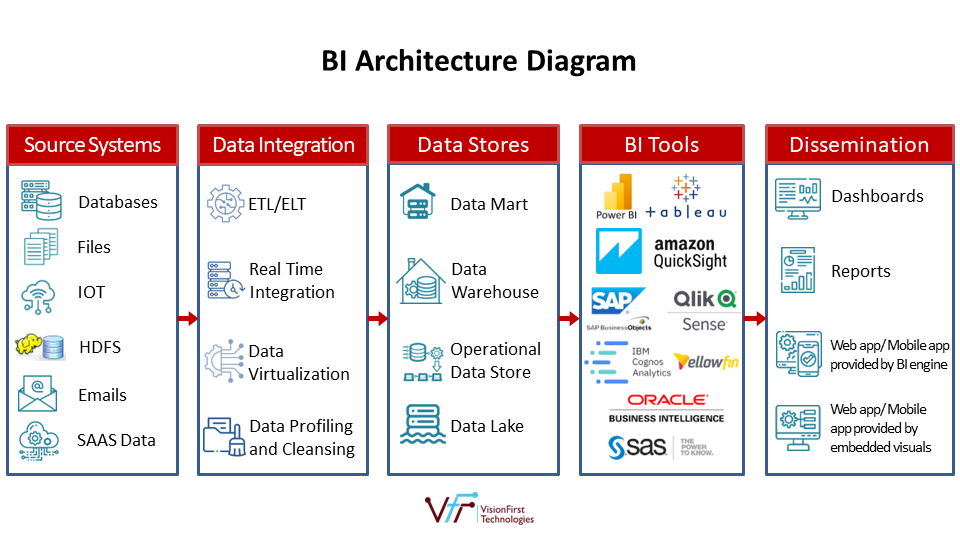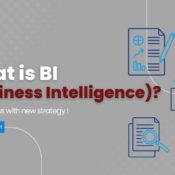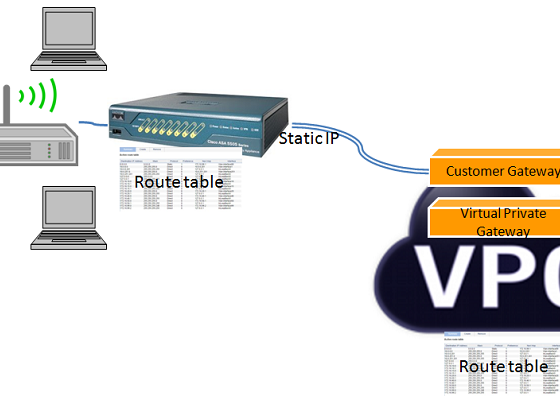Decoding Business Intelligence Architecture For Informed Decision Making

Decoding Business Intelligence Architecture For Informed Decision Making
Your business decisions seem to depend on high-quality data and information. But in today's highly competitive market, your business needs agile access to the data storage warehouse, which appropriately organizes the data to boost profits and improve overall business performance.
It helps deliver fast, relevant, and accurate data insights. And BI architecture is the one that can meet all these specific requirements at once by making data warehousing the backbone of these processes. So, a BI architecture refers to an organization's framework for different technologies deployed to analytics applications. From IT software tools to network systems, these are popularly used to integrate, collect, store, and analyze BI data.
The underlying BI architecture is all about tracking the overall progress and performance of the company's business. It is known for collecting BI data and helping in data analysis, which eventually helps optimize the business processes, enhance the strategies, and identify new revenue opportunities, ultimately leading to making more informed decisions.

Understanding Components of BI Architecture
BI architecture can be deployed either on the cloud or on-premises data centers. However, this architecture comprises components that assist in developing different stages of the BI processes. It includes data collection, analysis, storage, information delivery, and more. How does it help? Ultimately, it helps in making profitable decisions for the company's business. Let’s get an overview of the core components of the BI architecture:
Source Systems
It is essential to capture the data within the operating system to analyze it. So, this happens to be the initiation point for any BI initiative. The organization data is initially created in these assigned databases. Source systems refer to the ones that capture and store the operational and transactional data that eventually get identified as essential for the BI program. It can include manufacturing and supply chain management, databases, emails, files, IoT, scripts, finance, etc. Refer to these as primary sources, as the secondary ones are based on collecting market data and user databases from external information providers. Hence, the BI architecture seems composed of external and internal data sources. What are the essential criteria within the data source selection procedure? The process includes data currency, data relevancy, data quality, and level of the details within the available data sets. It also needs a combination of unstructured, semi-structured, and structured data types to meet the decision-making requirements and data analysis.ETL Process
ETL stands for Extract Transform Load, which is done by utilizing custom solutions. It is done by the data extraction process from the operational systems and is then loaded into the data warehouse. Some examples of such tools are Oracle Data Integrator, IBM Websphere Data Stage, Microsoft Integration Services, Ab Initio, etc.Data Integration & Cleansing Tools
Once you have collected the data, it is time to analyze it properly. To do so, the organization needs to integrate and consolidate the collected data sets and create unified views of these sets. As discussed earlier, this is a variant of ETL where data is extracted and loaded for specific UI utilities. Also, it can include other methods like real-time data integration, data virtualization, etc., where the system combines data collected from various source systems virtually. A typical BI architecture will consist of data cleansing and data profiling tools for identifying data and thereby devising strategies to fix the quality issues. So, these tools are reliable and offer excellent benefits to the data management teams to provide clean and consistent data, which can facilitate the entire BI process.Data Stores
So, once you have collected and processed the data, you need a place to store them securely. So, here comes the role of the data stores, which are nothing but repositories to store and manage the BI data with utmost security. The primary one refers to the data warehouse, which is responsible for storing the structured data in either columnar, relational, or multidimensional databases, making it available for analysis and querying. An enterprise data warehouse can be teamed up with smaller data marts for specific departments and even business units with data that are ultimately specific to their BI requirements. BI architecture also consists of the ODS or operational data store, an interim data repository. It is known for running analytical queries against any recent transaction data. Remember that a well-planned BI architecture will always specify the type of data store that can suit the specific BI requirements of the enterprise.BI & Data Visualization Tools
Tools are used explicitly for analyzing and presenting the information to their business users and involve a lot of technologies that can be built within the BI architecture. In addition, the availability of self-service BI tools has made the entire task of running queries pretty smooth and seamless for managers and business analysts. They no longer have to depend on any team member of BI to complete this task. The BI software also comprises a data visualization tool used to graphically represent the cluster of stored or acquired data in the form of graphs, charts, or other outliners.Dissemination
Finally, the BI architecture also needs appropriate information delivery tools to help business users get decent visibility into the BI and analytics results. These are available with in-built data visualizations along with self-service capabilities dedicated to additional data analysis. In addition, dashboards and reports can provide real-time data access to the analysts to drill them down quickly in proper static formats.Conclusion
These are the basics one needs to know about the BI architecture to simplify data management in their organization. The perspective of typical BI is to analyze, clean, monitor, and evaluate your data the most comprehensively and finest ever possible. So, although these strategies are being used at tactical managerial levels within any organization, their effectiveness ultimately depends on the data quality gathered at the specific operational levels. VisionFirst Technologies: Simplifying Data Management With Big Data Analytics & More! Book an appointment with a solutions architect to tighten your data security policies!
Tags:aws advanced partneraws consulting partneraws partneraws select partneraws service provideraws technologyazure consulting partnerazure partnerazure service providerbusiness intelligence architecturecloud architecturecloud bi solutionscloud security provider business intelligence consulting company aws managed security services business intelligence financial services
Recent Posts
visionfirst0 Comments
Decoding Business Intelligence Architecture For Informed Decision Making
visionfirst0 Comments
What is BI (Business Intelligence)?
visionfirst0 Comments
S3 Ransomware – how it occurs and how to prevent
Tags
aws advanced partner
aws consulting partner
aws partner
aws select partner
aws service provider
aws technology
azure consulting partner
azure partner
azure service provider
business intelligence architecture
cloud architecture
cloud bi solutions
cloud security provider business intelligence consulting company aws managed security services business intelligence financial services
Related Blogs
Himanshu Bansal0 Comments
Practical Guide to creating AWS site to site VPN
In our article Cloud – an extension to your infrastructure, we discussed about different network
visionfirst0 Comments
AWS Resource Groups – the Dashboard
Background – Life without resource groups To manage resources well and to keep cost in
visionfirst0 Comments
Aurora Serverless tamed for Developers (faster time to market)
AWS Aurora Serverless is a good option for Development and unpredictable workload. However, Aurora Serverless







